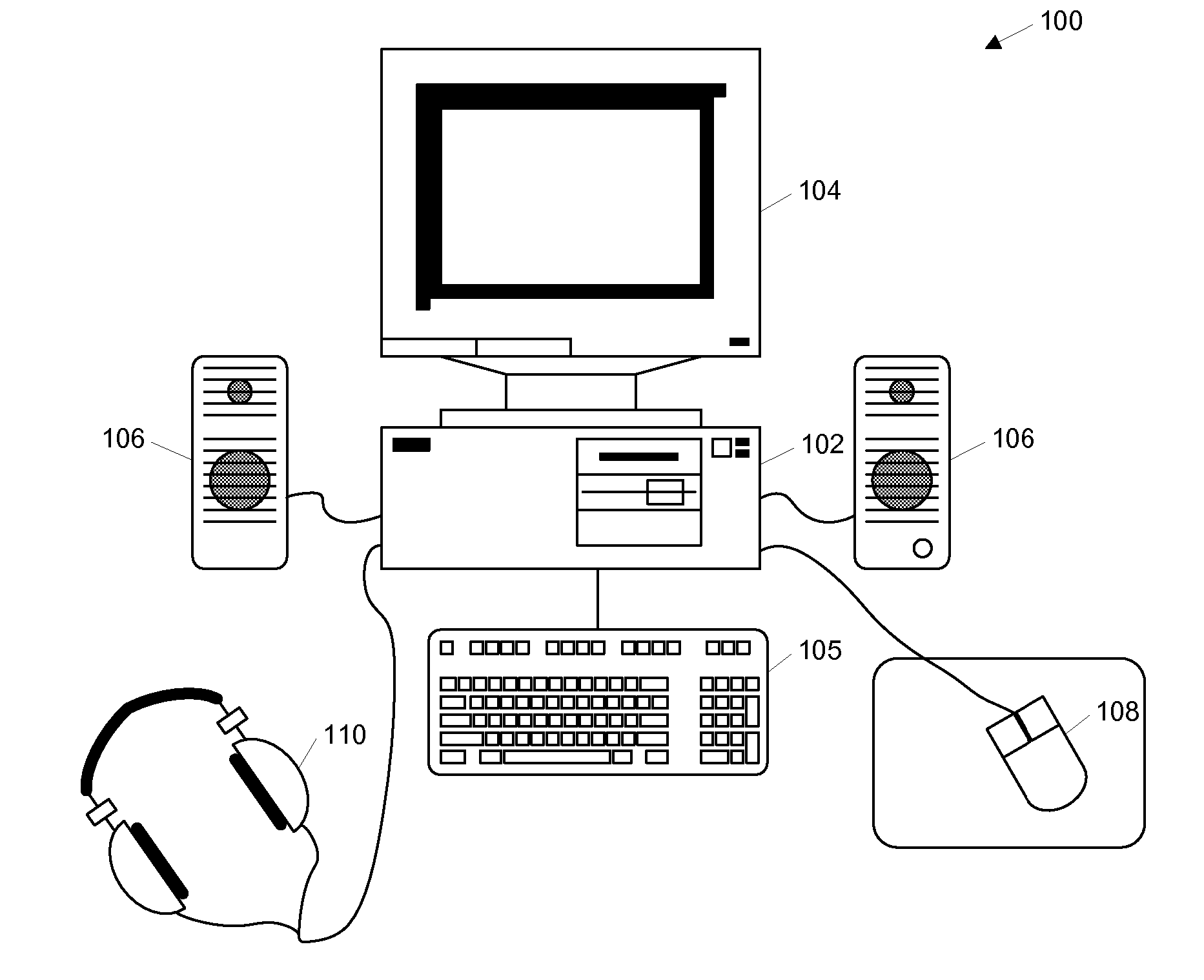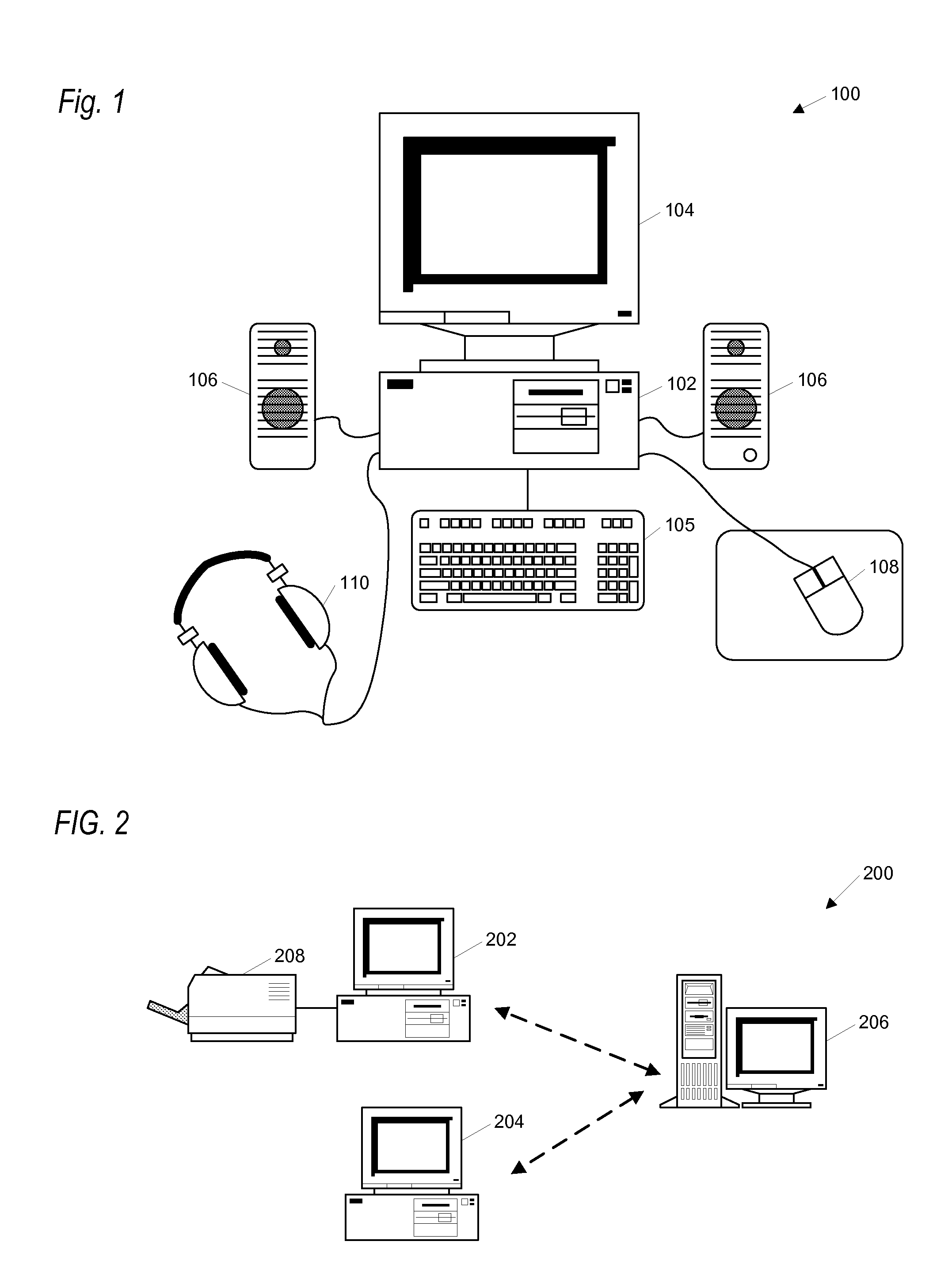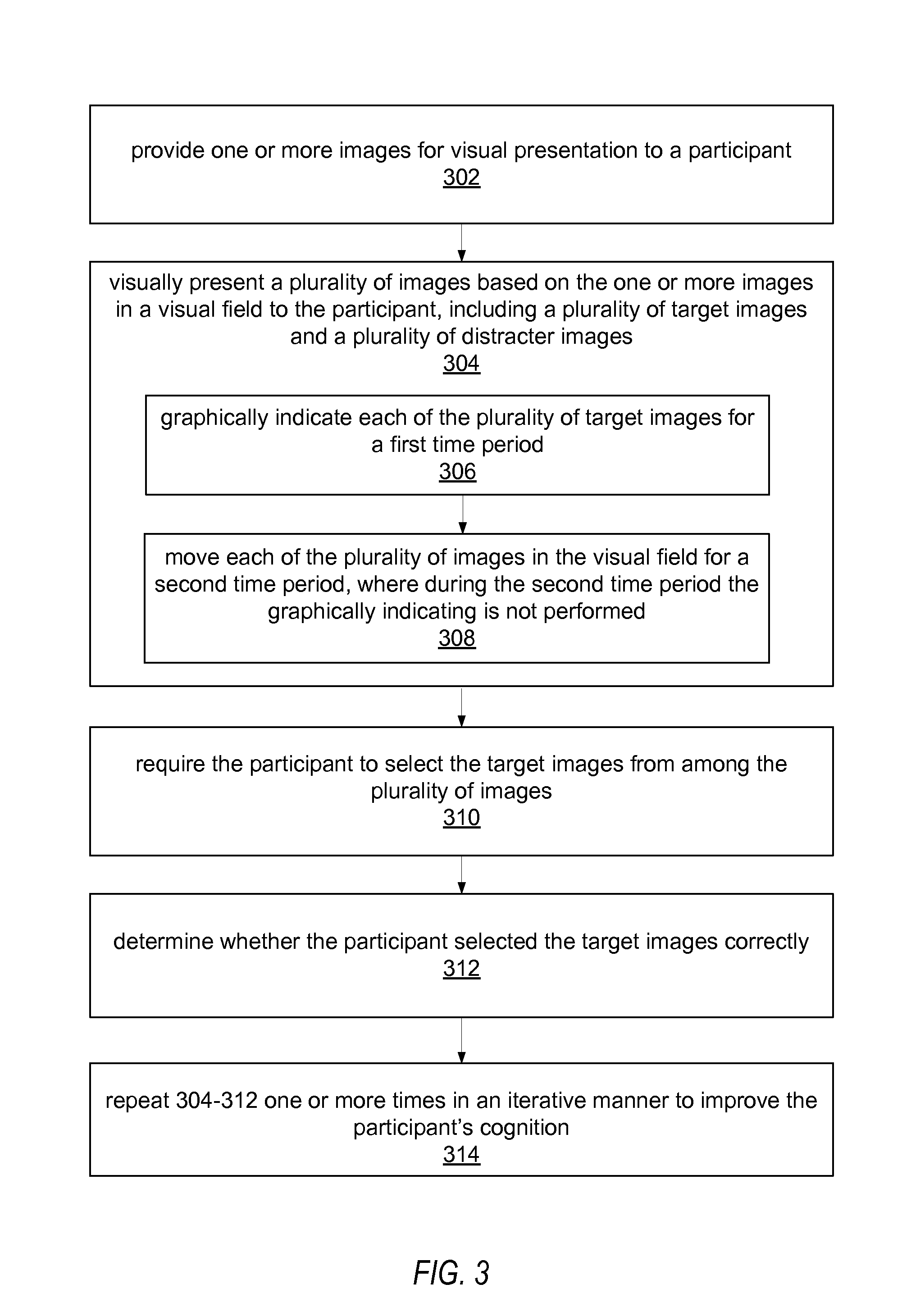Cognitive training using multiple object tracking
a technology of cognitive training and multiple objects, applied in the field of brain health programs, can solve the problems of affecting the cognition of older people, affecting affecting so as to improve the ability of the visual nervous system, improve the cognition of participants, and improve the ability of divided attention
- Summary
- Abstract
- Description
- Claims
- Application Information
AI Technical Summary
Benefits of technology
Problems solved by technology
Method used
Image
Examples
Embodiment Construction
[0046] Referring to FIG. 1, a computer system 100 is shown for executing a computer program to train, or retrain an individual according to the present invention to enhance cognition, where the term “cognition” refers to the speed, accuracy and reliability of processing of information, and attention and / or memory, and where the term “attention” refers to the facilitation of a target and / or suppression of a non-target over a given spatial extent, object-specific area or time window. The computer system 100 contains a computer 102, having a CPU, memory, hard disk and CD ROM drive (not shown), attached to a monitor 104. The monitor 104 provides visual prompting and feedback to the subject during execution of the computer program. Attached to the computer 102 are a keyboard 105, speakers 106, a mouse 108, and headphones 110. In some embodiments, the speakers 106 and the headphones 110 may provide auditory prompting and feedback to the subject during execution of the computer program. Th...
PUM
 Login to View More
Login to View More Abstract
Description
Claims
Application Information
 Login to View More
Login to View More - R&D
- Intellectual Property
- Life Sciences
- Materials
- Tech Scout
- Unparalleled Data Quality
- Higher Quality Content
- 60% Fewer Hallucinations
Browse by: Latest US Patents, China's latest patents, Technical Efficacy Thesaurus, Application Domain, Technology Topic, Popular Technical Reports.
© 2025 PatSnap. All rights reserved.Legal|Privacy policy|Modern Slavery Act Transparency Statement|Sitemap|About US| Contact US: help@patsnap.com



